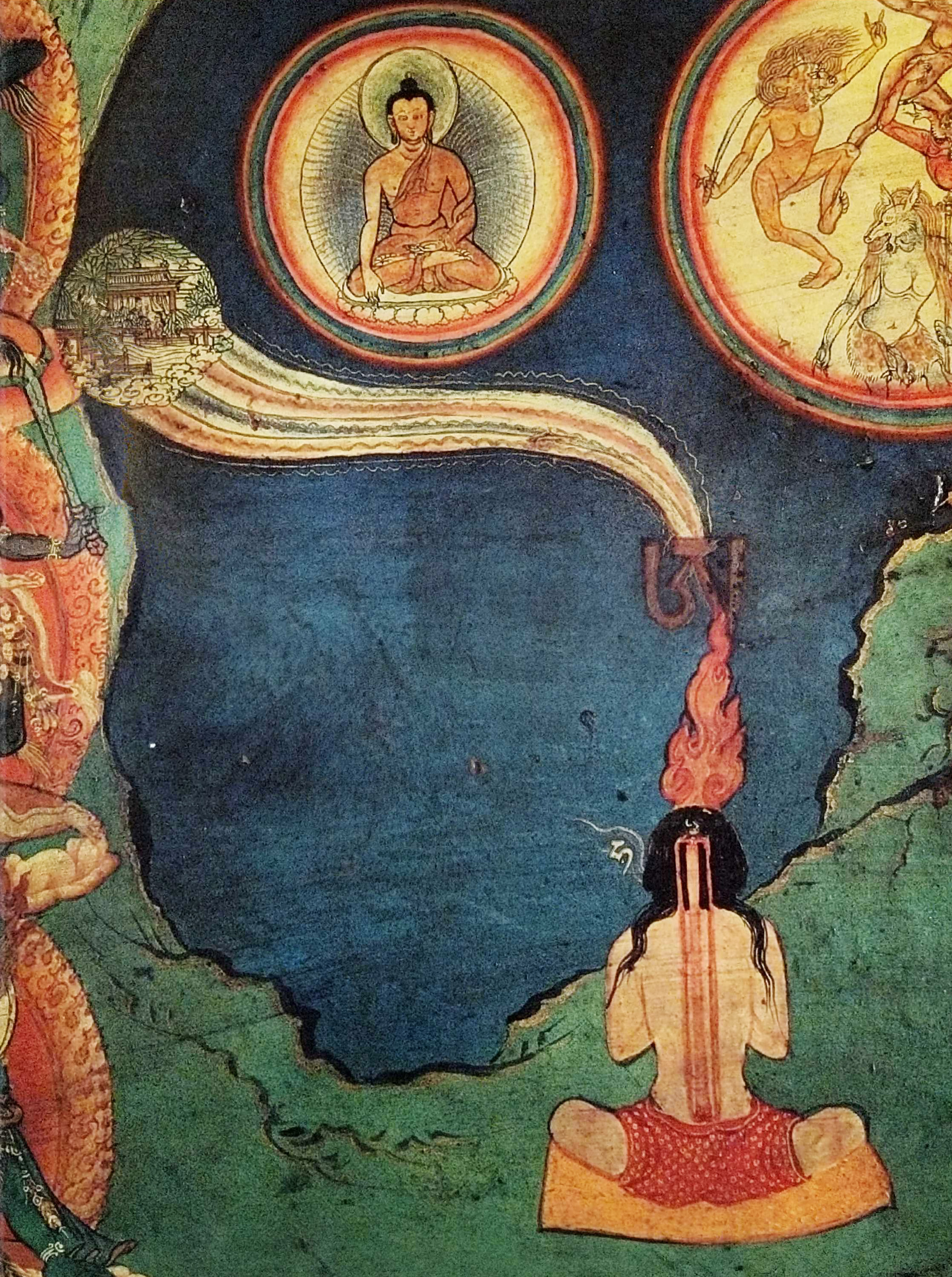Even if you could stay in samadhi meditation twenty-four hours a day for twenty days, Milarepa would say to you, “That means nothing! It does not compare to my inner fire meditation.” This is how he responded to Gampopa at their first meeting, after Gampopa had described his meditation experiences.
— Lama Yeshe, The Bliss of Inner Fire
As a testament to the importance of the g-tummo practice at Gebchak nunnery, this ceremony is held annually, at dawn, and all of the experienced practitioners walk slowly for a few hours around the nunnery complex in −25°C to −30°C weather, wearing only short skirts and shoes and a wet sheet draped around their naked torsos.
— Neurocognitive and Somatic Components of Temperature Increases during g-Tummo meditation
Tummo is an ancient Tibetan meditation more widely known as "inner fire." It's called that way because you generate heat deep in the core of your body. The heat is intense enough that the Tibetans (who've mastered the technique) can walk around shirtless in freezing temperatures for hours and feel perfectly fine.
You may have heard of Wim Hof (the Ice Man) who's famous for hiking Everest in his underwear and spending hours in ice water. He uses a technique similar to inner fire, which he learned from people in Tibet. But as you will see, these instructions don't resemble "the Wim Hof technique" even if there's some overlap with the parts about breath retention. But I think the effects on the body and health are supposed to be similar: a more energetic mind, less need for sleep, and stronger mindfulness. One can hope, anyway.
People who practice inner fire meditation tend to be rather fond of it. Shai Tubali says, "don't try inner fire if you're afraid of bliss." Apparently, bliss is a side-effect of tummo. Neither the heat nor the bliss are the purpose of the practice, which is not inner fire but inner stillness. Still, if you're going to take a long drive anyway, might as well take a scenic route.
So that's all the good parts. But if inner fire is so great, why are you only hearing about it now, from me? One reason is that the Tibetans kept these techniques under lock and key. Really, they did not let just anyone learn this stuff. They were afraid it could be abused, or even harm the practicioner. Since they know a lot more about this stuff than us, we should take that seriously.
On the other hand, a few of notable teachers, namely Tenzin Wangyal Rinpoche, Shai Tubali, and Lama Yeshe, published books and courses on how to do the inner fire, which I read and watched. If they're willing to teach anyone willing to pay, I'm going to bet that whatever they teach is safe enough to share.
Therefore these are, as I understand them, the instructions for tummo, distilled down from what I've learned from those teachers. I'll update as my practice goes on.
Instructions
The idea is to imagine a ball of fire at the navel chakra performing vase breathing. The ball starts off imaginary, but over time becomes more real.
- The meditator sits with her spine straight, ideally in full lotus, but any position will do.
- She imagines her body as completely empty and hollow, as if her skin forms a shell around empty space. Optionally, she imagines herself to have red skin, like a deity.
- She breathes out, gently.
- She breathes in, filling the lungs all the way up with air.
- She swallows her saliva and imagines the saliva traveling all the way down the spine, past the stomach. She holds the breath.
- She lifts the root chakra (the perineal and anal muscles — this lifting is also called "mula banhda" in yoga) and keeps it lifted.
- While holding the breath she imagines a small ball of heat, the size of a small egg, deep inside the body — a few fingers below the navel and towards the spine.
- She imagines the egg, burning hot. Her whole mind is there, and all of her energy concentrating there. The heat from this point spreads gently throughout the body. Heat, energy, and calm will slowly build.
- When she's held the breath a long time, but not too long, she gently drops the lower basket (root chakra/mula bandha) and exhales.
- She repeats this three times, seven times, twenty one times — or more.
Helpful tips
- Be patient
- Practice at least twice a day
- Keep the air down, and out of your head
- Take cold showers often and wear loose, thin clothing
- Do the practice for the sake of all beings
Email me for questions.
